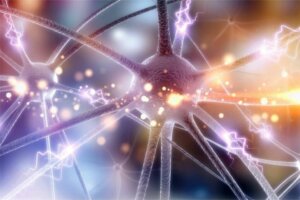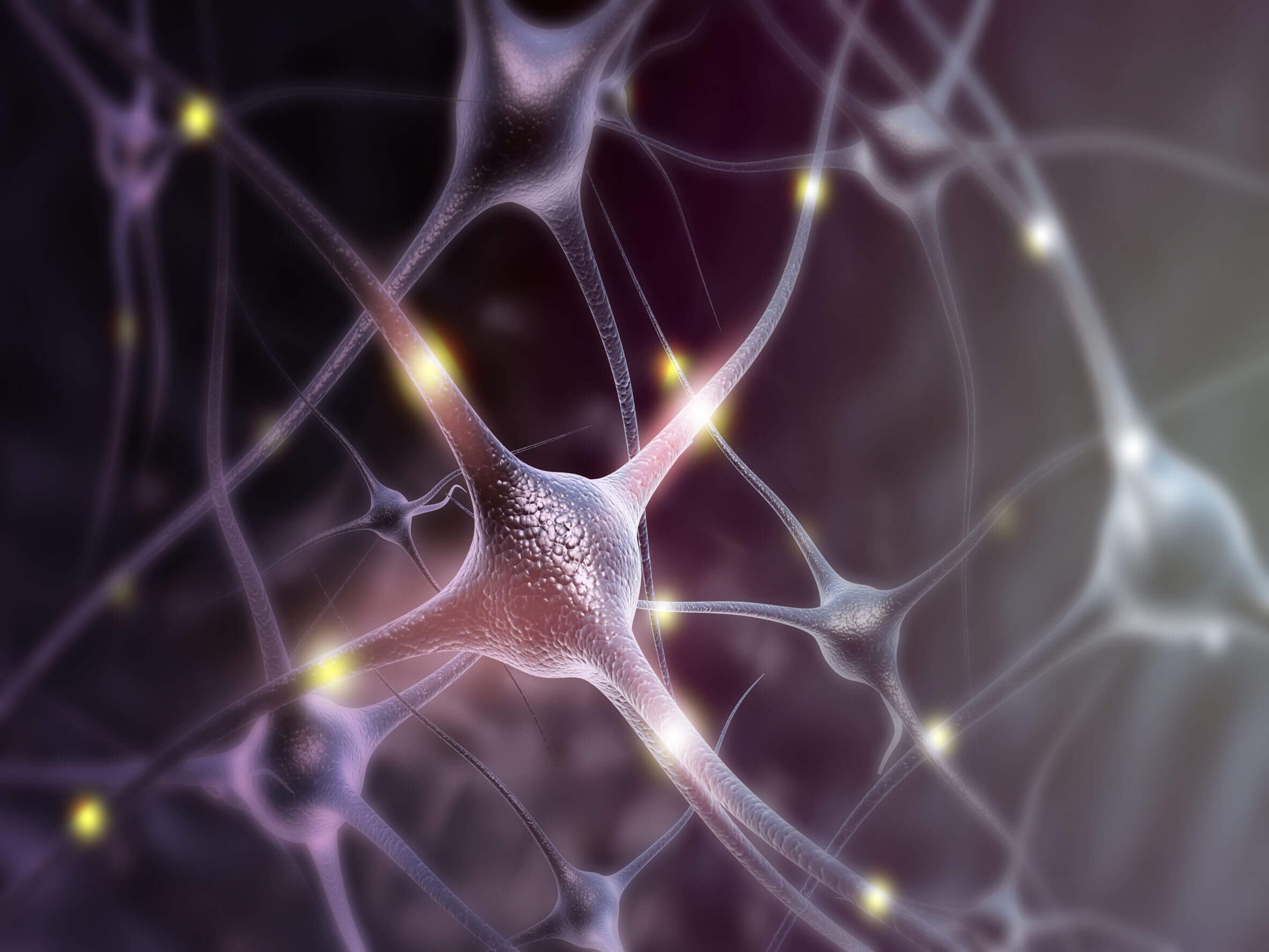What Is Brain-Derived Neurotrophic Factor?


Escrito y verificado por el biólogo Samuel Antonio Sánchez Amador
Brain-derived neurotrophic factor is a neurotrophin that is especially important for the survival of neurons, although its functions go much further than that. The hippocampus is one of the areas where this element is most found.
Neurotrophic factors are secreted by different tissues, but their basic function and premise are common: to prevent target neurons from initiating cell apoptosis (death), thus allowing their short- and long-term survival. If you want to know everything about the nature and applications of BDNF, then we encourage you to continue reading.
What are neurotrophins?

To fully understand the role of brain-derived neurotrophic factor (BDNF), we must first thoroughly describe what neurotrophins are and their function. Let’s have a closer look!
As we’ve said before, neurotrophins are a family of proteins involved in neuronal survival. The neurotrophic hypothesis postulates that neurons of the developing nervous system only survive by receiving neurotrophic signals, which are transported to the neuronal soma (body), allowing them to survive.
Based on this explanation, it is postulated that there could be more precursor cell types of nerve cells during embryonic development than actual neurons when humans are fully formed. Thus, after the process is carried out, only the cells that receive neurotrophic signals would survive, while the rest would suffer programmed cell death.
An applied example
The magazine Investigación y Ciencia shows us an example that helps us to understand this application. The programmed cell death of certain neuronal groups during development in chickens has been quantified, and it also appears that this mechanism is essential for the innervation of the skin and the formation of sensory endings.
If a bird’s wing primordium is removed during embryonic development, then this removes a significant percentage of neurons from the ganglia that form and innervate the structure. This confirms that the skin of the wing primordium produces limiting neurotrophic factors, necessary for neuronal survival during embryonic development.
This experiment shows that, by eliminating certain structures, the neural representation in distant areas related to them can be disrupted.
The world of neurotrophins
The neurotrophin family doesn’t only house brain-derived neurotrophic factor. Without going any further, the first one discovered was nerve growth factor (NCF), which occurs in the skin. This protein has the function of preventing the neurons of the dorsal root ganglia from degenerating during the period of innervation.
The absence of NCF reduces the number of low-threshold mechanoreceptors and nociceptive and thermoreceptor sensory neurons by 70-80%. On the other hand, it also involves the loss of 95% of synaptic neurons, responsible for transmitting nerve impulses. With these data its importance is evident.
Another well-studied neurotrophin is neurotrophin-3, which helps the differentiation and survival of existing neurons and enhances the growth of new ones. It also favors the establishment of neuronal synapses. Neurotrophin-3 was the third to be discovered, after FCN and BDNF.
What is brain-derived neurotrophic factor (BDNF)?
Following this extensive introduction, we’re now ready to thoroughly dissect the role of BDNF in neural development and nervous system function in humans.
According to a Medigraphic publication, brain-derived neurotrophic factor is the neurotrophin that plays a major role in the mammalian brain. This protein acts as a nerve growth factor and is found in the brain and peripheral tissues. It was isolated for the first time in the brain tissue of a pig in 1982.
Furthermore, despite playing an essential role during the development of the nervous system, it also participates in the maintenance and plasticity of mature structures in adult individuals.
BDNF functionality
According to studies , BDNF acts on certain neurons of the central and peripheral nervous system. In it, this protein promotes the survival of existing neurons and facilitates the growth, differentiation, and synapses of new neuronal bodies.
In addition, this compound is found in the brain itself, more specifically in the hippocampus, cortex, and basal forebrain, areas essential for learning and memory. Lastly, BDNF is also present in the retina, kidneys, prostate, skeletal muscle, and even in saliva.
BDNF is very important in the memory process. Although most neurons form in fetal development and remain throughout life, other parts of the brain retain the ability to form new neuronal bodies from stem cells, in a process known as neurogenesis. BDNF participates in it.
In addition to this, it’s clear that it also plays a key role in development. Studies with laboratory mice that did not have BDNF showed that these rodents had problems with brain development and severe failures in the sensory nervous system. In the vast majority of cases, these defective mammals died shortly after birth.
With these laboratory studies, experts have shown that the brain-derived neurotrophic factor is essential for life.
Brain-derived neurotrophic factor and depression

Beyond research with laboratory mice, brain-derived neurotrophic factor has been studied in human medicine. For example, studies have attempted to link its presence or absence to depression in patients.
The results are very curious. It turns out that BDNF levels decrease with stress, a predisposing factor to the onset of depression. In addition, it has been seen that antidepressants increase the proportion of this protein, consequently reducing the symptoms caused by these emotional processes.
There’s an even more interesting link to this protein regarding suicide. Sources already cited indicate that BDNF levels in the prefrontal cortices and hippocampi in people who had committed suicide were very low. Regardless of the psychiatric disorder, suicidal patients had less BDNF in the brain.
Furthermore, the presence of serum BDNF was higher in patients who had attempted suicide, compared with those who did not.
Brain-derived neurotrophic factor and schizophrenia
It isn’t uncommon to link both terms, as this protein has a lot to say in the field of mental illness. We don’t want to dwell on technicalities, and so it’s enough for us to mention the following research, which has shown the lack of BDNF in critical areas of the brain in schizophrenic patients.
These studies give a promising front for neuroscience, as increasing the expression of neurotrophins may be the key to avoiding certain pathologies that up till now have had no solution. Only time and science will tell if this data is simply good common knowledge, or if, in addition, it can help the human species to combat its deterioration.
BDNF and other diseases
According to sources already cited and many others, brain-derived neurotrophic factor seems to play essential roles in many more pathologies than those we’ve brought to you. In order not to leave anything out, we’ll mention the most relevant ones:
- Alzheimer’s disease: Autopsies have detected lower levels of brain-derived neurotrophic factor in Alzheimer’s patients. This correlation isn’t entirely clear yet, and so its applicability in all cases cannot be assured.
- Epilepsy: Due to the peculiarities of epilepsy, it’s believed that the concentration of BDNF in the brain may play essential roles in the development of seizures.
- Age: The levels of this protein vary according to the age of the individual. Recording the differences between vital stages can be key to explaining certain changes in the brain.
Of course, the correlation and causality between these diseases and BDNF has yet to be studied. All the results presented are theories and indications, and there’s still a long way to go until they become inalienable applications.
A vital substance for the brain
We’re moving in an area that’s difficult to understand here, but the general message is clear. Neurotrophins are essential for the development and maintenance of the nervous system, because, when they aren’t present, then there are fewer neurons in total, as well as serious failures in the system, at least as far as mammals are concerned.
For its part, brain-derived neurotrophic factor appears to be essential for the long-term maintenance and development of the human brain. It plays such essential roles as the preservation of memory, brain neurogenesis, and the maintenance of an adequate emotional state, among other things.
Brain-derived neurotrophic factor is a neurotrophin that is especially important for the survival of neurons, although its functions go much further than that. The hippocampus is one of the areas where this element is most found.
Neurotrophic factors are secreted by different tissues, but their basic function and premise are common: to prevent target neurons from initiating cell apoptosis (death), thus allowing their short- and long-term survival. If you want to know everything about the nature and applications of BDNF, then we encourage you to continue reading.
What are neurotrophins?

To fully understand the role of brain-derived neurotrophic factor (BDNF), we must first thoroughly describe what neurotrophins are and their function. Let’s have a closer look!
As we’ve said before, neurotrophins are a family of proteins involved in neuronal survival. The neurotrophic hypothesis postulates that neurons of the developing nervous system only survive by receiving neurotrophic signals, which are transported to the neuronal soma (body), allowing them to survive.
Based on this explanation, it is postulated that there could be more precursor cell types of nerve cells during embryonic development than actual neurons when humans are fully formed. Thus, after the process is carried out, only the cells that receive neurotrophic signals would survive, while the rest would suffer programmed cell death.
An applied example
The magazine Investigación y Ciencia shows us an example that helps us to understand this application. The programmed cell death of certain neuronal groups during development in chickens has been quantified, and it also appears that this mechanism is essential for the innervation of the skin and the formation of sensory endings.
If a bird’s wing primordium is removed during embryonic development, then this removes a significant percentage of neurons from the ganglia that form and innervate the structure. This confirms that the skin of the wing primordium produces limiting neurotrophic factors, necessary for neuronal survival during embryonic development.
This experiment shows that, by eliminating certain structures, the neural representation in distant areas related to them can be disrupted.
The world of neurotrophins
The neurotrophin family doesn’t only house brain-derived neurotrophic factor. Without going any further, the first one discovered was nerve growth factor (NCF), which occurs in the skin. This protein has the function of preventing the neurons of the dorsal root ganglia from degenerating during the period of innervation.
The absence of NCF reduces the number of low-threshold mechanoreceptors and nociceptive and thermoreceptor sensory neurons by 70-80%. On the other hand, it also involves the loss of 95% of synaptic neurons, responsible for transmitting nerve impulses. With these data its importance is evident.
Another well-studied neurotrophin is neurotrophin-3, which helps the differentiation and survival of existing neurons and enhances the growth of new ones. It also favors the establishment of neuronal synapses. Neurotrophin-3 was the third to be discovered, after FCN and BDNF.
What is brain-derived neurotrophic factor (BDNF)?
Following this extensive introduction, we’re now ready to thoroughly dissect the role of BDNF in neural development and nervous system function in humans.
According to a Medigraphic publication, brain-derived neurotrophic factor is the neurotrophin that plays a major role in the mammalian brain. This protein acts as a nerve growth factor and is found in the brain and peripheral tissues. It was isolated for the first time in the brain tissue of a pig in 1982.
Furthermore, despite playing an essential role during the development of the nervous system, it also participates in the maintenance and plasticity of mature structures in adult individuals.
BDNF functionality
According to studies , BDNF acts on certain neurons of the central and peripheral nervous system. In it, this protein promotes the survival of existing neurons and facilitates the growth, differentiation, and synapses of new neuronal bodies.
In addition, this compound is found in the brain itself, more specifically in the hippocampus, cortex, and basal forebrain, areas essential for learning and memory. Lastly, BDNF is also present in the retina, kidneys, prostate, skeletal muscle, and even in saliva.
BDNF is very important in the memory process. Although most neurons form in fetal development and remain throughout life, other parts of the brain retain the ability to form new neuronal bodies from stem cells, in a process known as neurogenesis. BDNF participates in it.
In addition to this, it’s clear that it also plays a key role in development. Studies with laboratory mice that did not have BDNF showed that these rodents had problems with brain development and severe failures in the sensory nervous system. In the vast majority of cases, these defective mammals died shortly after birth.
With these laboratory studies, experts have shown that the brain-derived neurotrophic factor is essential for life.
Brain-derived neurotrophic factor and depression

Beyond research with laboratory mice, brain-derived neurotrophic factor has been studied in human medicine. For example, studies have attempted to link its presence or absence to depression in patients.
The results are very curious. It turns out that BDNF levels decrease with stress, a predisposing factor to the onset of depression. In addition, it has been seen that antidepressants increase the proportion of this protein, consequently reducing the symptoms caused by these emotional processes.
There’s an even more interesting link to this protein regarding suicide. Sources already cited indicate that BDNF levels in the prefrontal cortices and hippocampi in people who had committed suicide were very low. Regardless of the psychiatric disorder, suicidal patients had less BDNF in the brain.
Furthermore, the presence of serum BDNF was higher in patients who had attempted suicide, compared with those who did not.
Brain-derived neurotrophic factor and schizophrenia
It isn’t uncommon to link both terms, as this protein has a lot to say in the field of mental illness. We don’t want to dwell on technicalities, and so it’s enough for us to mention the following research, which has shown the lack of BDNF in critical areas of the brain in schizophrenic patients.
These studies give a promising front for neuroscience, as increasing the expression of neurotrophins may be the key to avoiding certain pathologies that up till now have had no solution. Only time and science will tell if this data is simply good common knowledge, or if, in addition, it can help the human species to combat its deterioration.
BDNF and other diseases
According to sources already cited and many others, brain-derived neurotrophic factor seems to play essential roles in many more pathologies than those we’ve brought to you. In order not to leave anything out, we’ll mention the most relevant ones:
- Alzheimer’s disease: Autopsies have detected lower levels of brain-derived neurotrophic factor in Alzheimer’s patients. This correlation isn’t entirely clear yet, and so its applicability in all cases cannot be assured.
- Epilepsy: Due to the peculiarities of epilepsy, it’s believed that the concentration of BDNF in the brain may play essential roles in the development of seizures.
- Age: The levels of this protein vary according to the age of the individual. Recording the differences between vital stages can be key to explaining certain changes in the brain.
Of course, the correlation and causality between these diseases and BDNF has yet to be studied. All the results presented are theories and indications, and there’s still a long way to go until they become inalienable applications.
A vital substance for the brain
We’re moving in an area that’s difficult to understand here, but the general message is clear. Neurotrophins are essential for the development and maintenance of the nervous system, because, when they aren’t present, then there are fewer neurons in total, as well as serious failures in the system, at least as far as mammals are concerned.
For its part, brain-derived neurotrophic factor appears to be essential for the long-term maintenance and development of the human brain. It plays such essential roles as the preservation of memory, brain neurogenesis, and the maintenance of an adequate emotional state, among other things.
- Las neurotrofinas y sus receptores, Investigación y Ciencia. Recogido a 8 de marzo en https://www.investigacionyciencia.es/files/5118.pdf
- Castañeda, G. A., Jares, R. E. P., & Medina, J. A. V. (2010). Factor neurotrófico derivado del cerebro en el trastorno depresivo mayor. El Residente, 5(1), 19-21.
- Acheson A, Conover JC, Fandl JP, DeChiara TM, Russell M, Thadani A, Squinto SP, Yancopoulos GD, Lindsay RM (March 1995). “A BDNF autocrine loop in adult sensory neurons prevents cell death”. Nature. 374 (6521): 450–53.
- Ernfors P, Kucera J, Lee KF, Loring J, Jaenisch R (October 1995). “Studies on the physiological role of brain-derived neurotrophic factor and neurotrophin-3 in knockout mice”
- Silva, D., Vicente, B., & Valdivia, M. (2015). Factor neurotrófico derivado del cerebro como marcador de conducta suicida en pacientes con trastorno depresivo mayor. Revista chilena de neuro-psiquiatría, 53(1), 44-52.
Este texto se ofrece únicamente con propósitos informativos y no reemplaza la consulta con un profesional. Ante dudas, consulta a tu especialista.







